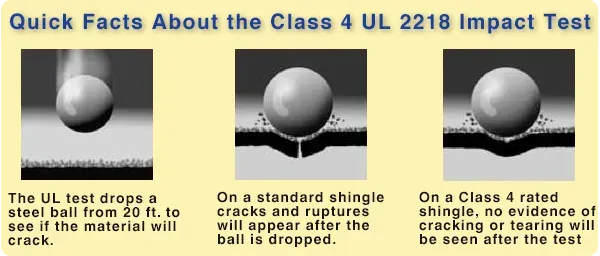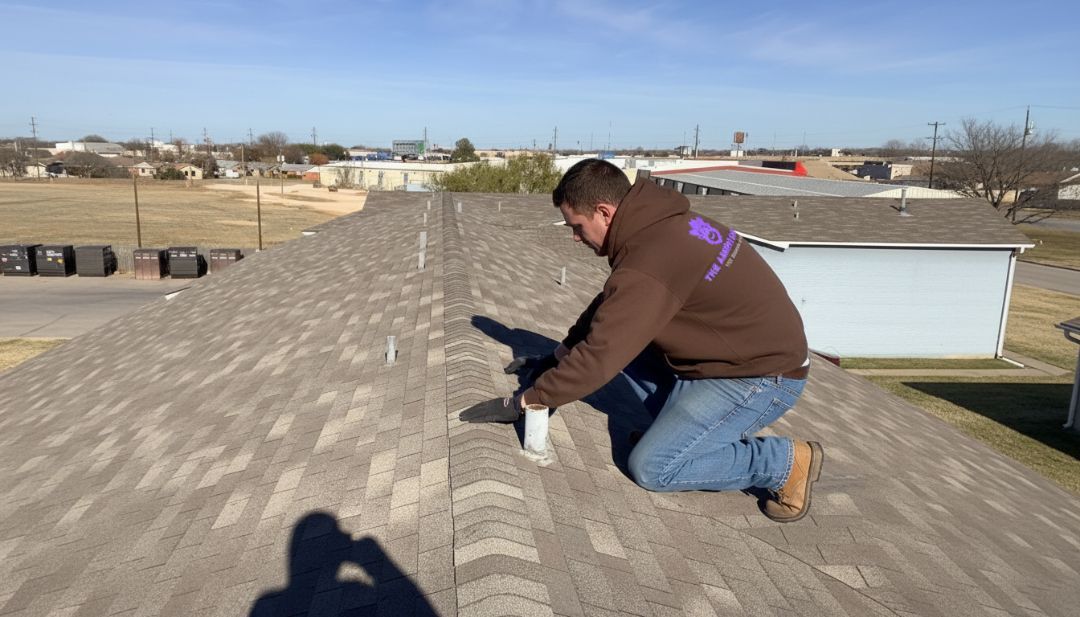What Is Impact-Resistant Roofing — And Do You Really Need It in Texas?
TLDR;
Impact-resistant roofing is a specially engineered system designed to withstand damage from hail, high winds, and flying debris—conditions that are common in Texas. If you're a Texas homeowner or business owner, the short answer is yes—you likely do need it, especially if you're in a hail-prone area like Dallas, Fort Worth, or Amarillo.
Understanding Impact-Resistant Roofing in Texas
With hailstorms hammering Texas more often each year, the need for stronger, more durable roofing solutions has become not just smart—but necessary. Impact-resistant roofing isn’t just a buzzword; it’s a response to rising claims, rising premiums, and rising costs.
This article explores every important aspect of impact-resistant roofing, from definitions and materials to insurance, cost, and long-term value—through the eyes of a
roofing professional.
What Is Impact-Resistant Roofing?
Impact-resistant roofing refers to roofing materials tested and certified to withstand extreme weather conditions—especially hail and debris impact.
These materials are classified under the UL 2218 impact rating system, ranging from Class 1 (lowest) to Class 4 (highest). Class 4-rated roofing can withstand the impact of a 2-inch steel ball dropped from 20 feet—simulating the force of large hailstones.
Key Features:
- Engineered for durability against impact and wind uplift
- Rated using
UL 2218 testing standards
- Qualifies for insurance discounts in many Texas counties
- Available in several materials including asphalt, metal, and synthetic composites
How the UL 2218 Class 4 Test Works

The UL 2218 steel ball test measures how well roofing materials handle impact without cracking. Here’s how the test works:
- Steel balls of varying sizes are dropped from 12–20 feet
- The material is examined for visible cracks or substrate damage
- Class 4 means no rupture, tear, or visible cracking after impact
Why It Matters in Texas:
Hail claims in Texas cost insurers and homeowners over a billion dollars annually. Your roof is the first line of defense—if it fails, so does your insulation, drywall, and even electrical system.
Materials That Qualify as Impact-Resistant
Different roofing types meet Class 3 or Class 4 standards. Each has unique strengths depending on your budget, aesthetic, and structural needs.
1. Asphalt Impact-Resistant Shingles
- Reinforced with fiberglass mat or polymer-modified bitumen
- Designed to flex rather than crack under impact
- Economical and widely available
2. Stone-Coated Metal Roofing
- Often rated Class 4 for hail and wind
- Extremely durable with a 40–70 year lifespan
- Lightweight and fire-resistant
- Energy-efficient due to reflectivity
- 100% recyclable
3. Composite Shingles
- Made from polymer, rubber, or recycled plastic
- Engineered to mimic slate, wood, or tile
- Lightweight, flexible, and hail-resistant
- Great insulation properties
4. Synthetic Slate or TPO Systems
- Synthetic slate offers upscale curb appeal
- TPO (thermoplastic polyolefin) used mostly for flat commercial roofs
- Both can be manufactured to meet Class 4 standards
Why Impact-Resistant Roofing Is Crucial in Texas
Texas leads the U.S. in hail damage claims. In 2023 alone, over 800 major hailstorms were reported across the state. From Amarillo to Houston, roofs are under siege.
Benefits for Texas Homeowners:
- Reduces Repair Costs: Fewer leaks, broken shingles, and interior damage
- Increases Roof Longevity: A Class 4 roof can last 2–3 times longer in storm zones
- Minimizes Insurance Claims: Less damage means fewer deductibles
- Peace of Mind: You’re covered when the next storm hits
Most Affected Regions:
- North Texas (DFW, Denton, McKinney): Hail belt zone
- Central Texas (Austin): High wind exposure
- Southeast Texas (Houston): Heavy rain + flying debris during hurricane season
Cost & Insurance Benefits in Texas
Let’s talk dollars and cents. Yes, impact-resistant roofing can be more expensive upfront—but it often pays for itself.
Cost Breakdown (Estimates in Texas):
- Standard Asphalt Shingles: $3.50–$5.50 per sq. ft.
- Class 4 Asphalt Shingles: $5.50–$7.50 per sq. ft.
- Stone-Coated Steel Roofing: $7.50–$12 per sq. ft.
- Composite or Synthetic Slate: $8–$14 per sq. ft.
Insurance Discounts:
- Many Texas insurance providers offer
5% to 35% premium reductions for homes with Class 4 roofing.
- You’ll need
official documentation and
manufacturer certification to qualify.
- Contact the
Texas Department of Insurance for approved products and carrier-specific incentives.
Regional Considerations Across Texas
Texas isn’t a one-size-fits-all roofing state. Weather, building codes, and roofing trends vary dramatically.
North Texas:
- Frequent hail and wind gusts
- Class 4 shingles or
metal roofing strongly recommended
Central Texas:
- Intermittent hail but strong UV exposure
- Energy-efficient, impact-resistant materials ideal
Gulf Coast (Houston, Beaumont):
- Wind uplift and water intrusion are top threats
- Focus on wind-rated, sealed-edge impact-resistant systems
West Texas:
- High sun exposure, lower humidity
- Metal roofs or synthetic shingles handle the temperature extremes well
Does It Improve Resale Value and Durability?
Absolutely. Buyers in storm-prone regions are more roof-conscious than ever.
What Buyers Look For:
- Recent roof installation with Class 4 or metal rating
- Manufacturer warranty transfers
- Lower likelihood of costly repairs
Property Value Boost:
- Impact-resistant roofs can increase home resale value by
1% to 4%
- Extend roof life by
15 to 30 years depending on material
Maintenance Tips & Warranties You Should Know
Just because it’s “impact-resistant” doesn’t mean it’s maintenance-free.
Maintenance Checklist:
- Inspect roof after each storm
- Clean out gutters and valleys quarterly
- Check for granule loss, lifted flashing, or punctures
- Schedule annual inspections with a certified roofing contractor
For added protection and longevity, especially on asphalt systems, consider applying a protective coating. Choosing the
best roof coating for shingles can help reduce UV damage, minimize granule loss, and enhance weather resistance—particularly in Texas where roofs endure intense sun and hail.
Warranties:
- Most manufacturers offer
30 to 50-year warranties on Class 4 roofs
- UL 2218 compliance may be required for full warranty eligibility
- Wind uplift ratings also vary—check your product label
DIY vs. Professional Inspections:
- DIY = Good for visual checks
- Pros = Can spot deeper issues (underlayment, flashing, attic moisture)
Installation Best Practices & Finding the Right Pro
The best material means nothing if it’s installed incorrectly.
Choose a Certified Installer:
- Look for
UL-certified roofing contractors
- Ask for
proof of insurance and
Texas licensing
- Get at least
3 quotes and compare material & labor warranties
Key Cities with Quality Installers:
- Dallas–Fort Worth: High competition, ask for Class 4 project portfolio
- Austin: Consider solar-ready systems if upgrading
- Houston: Check hurricane-rated roof options
- San Antonio: Seek contractors with hail damage restoration experience





